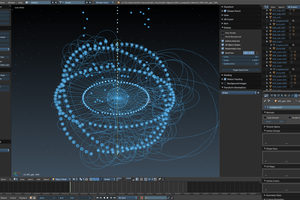B-Tree for on-disk storage
Disk seeks are expensive. B-Tree structure is designed specifically to avoid disk seeks as much as possible. Therefore B-Tree packs much more keys/pointers into a single node than a binary tree. This property makes the tree very flat. Usually most B-Trees are only 3 or 4 levels deep and the root node can be easily cached. This requires only 2-3 seeks to find anything in the tree. Leaves are also "packed" this way, so iterating a tree (e.g. full scan or range scan) is very efficient, because you read hundreds/thousands data-rows per single block (seek).
In binary tree of the same capacity, you'd have several tens of levels and sequential visiting every single value would require at least one seek.
 legacy
legacy

 Timescale
Timescale

 Aaron Miller
Aaron Miller
 Owen Trueblood
Owen Trueblood
One problem with filesystems is a lot of relevant info is incredibly fractured, and finding it often difficult due to the way the search function works. Infact, even searching for a specific metadata brought up a different item first.